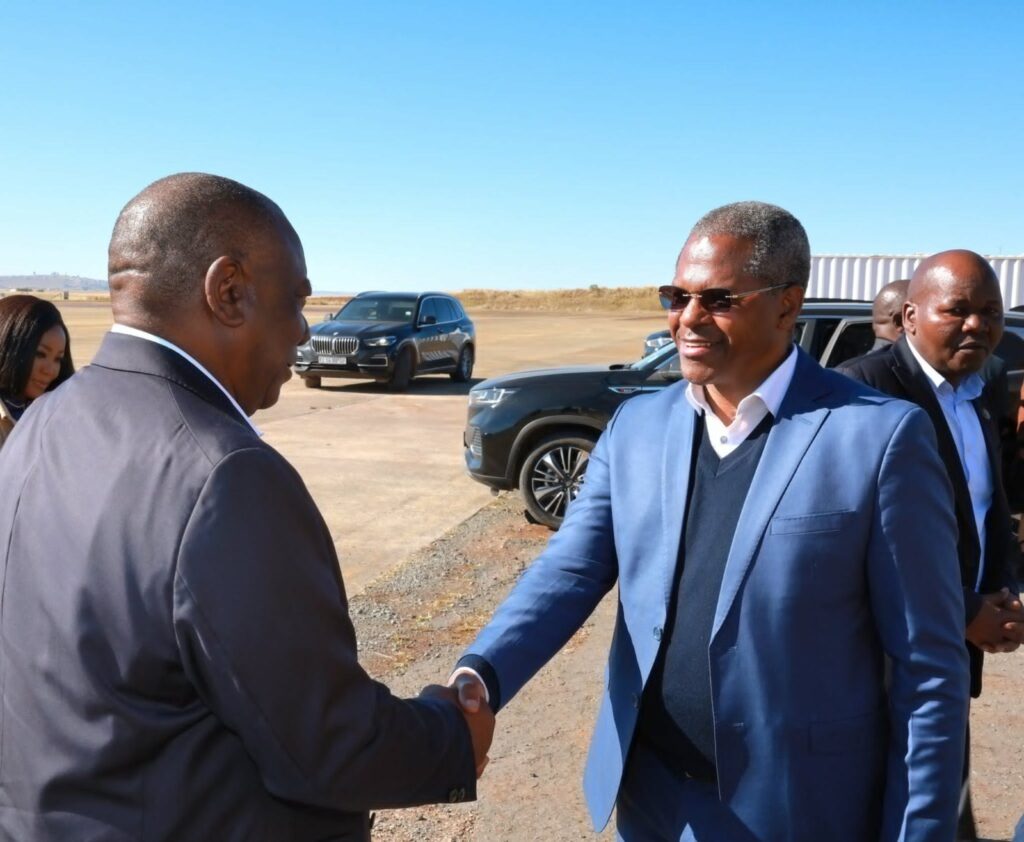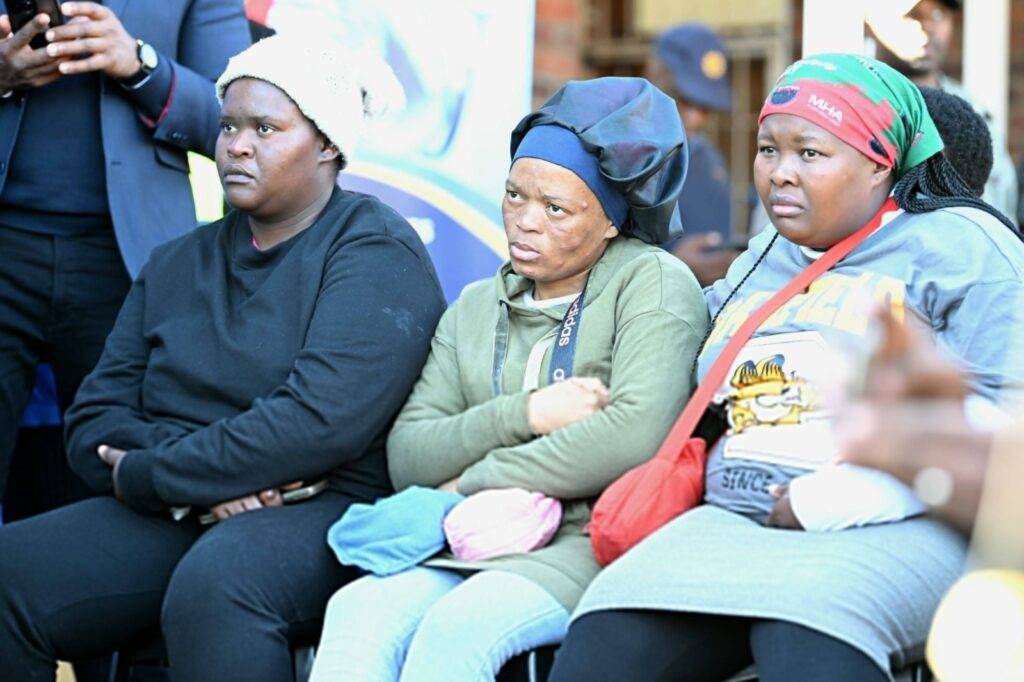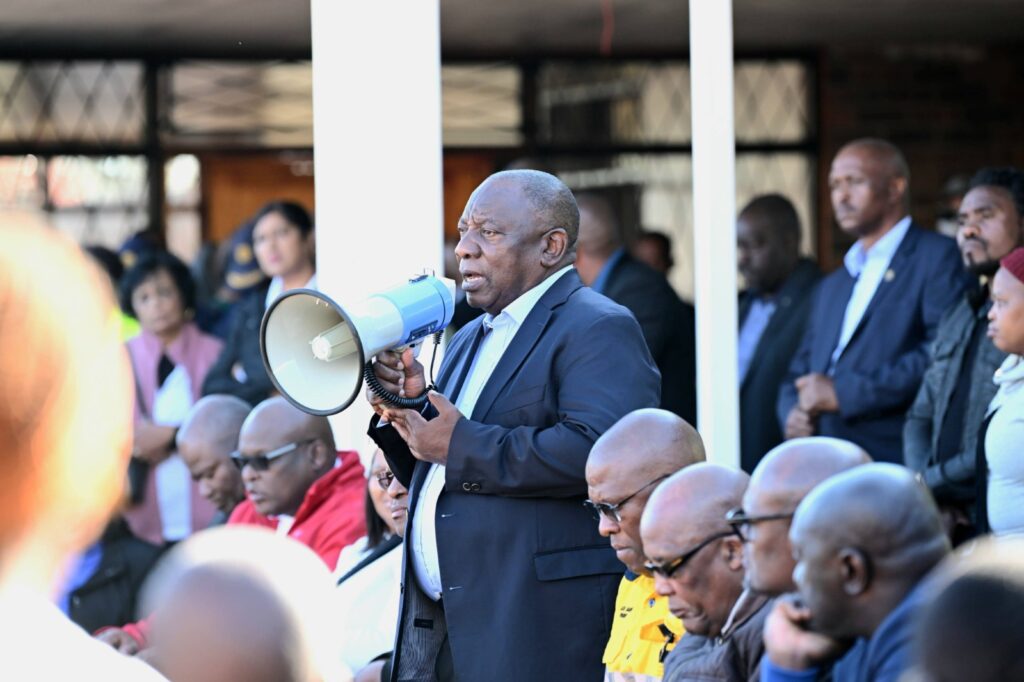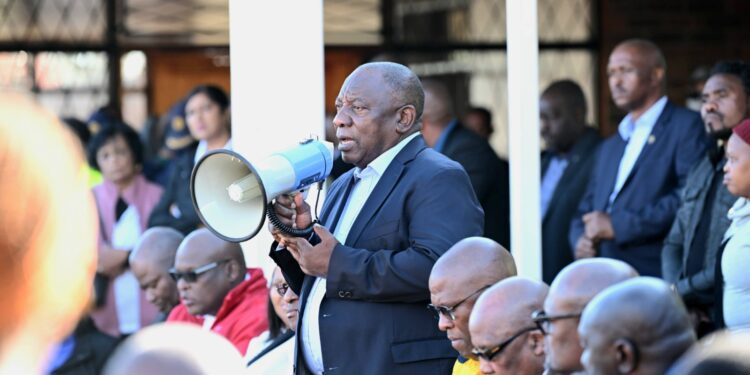South African President Cyril Ramaphosa on Friday visited flood-ravaged communities in the Eastern Cape province, where at least 78 people have died and thousands have been displaced following catastrophic floods and landslides. The president described the disaster as a direct consequence of climate change.
Touring the worst-hit areas around Mthatha, Ramaphosa met grieving survivors who had lost loved ones, homes, and livelihoods after heavy rains submerged entire neighbourhoods. Homes, roads, schools, and healthcare facilities were left coated in mud, with many residents left with nothing.

Rescue teams continued searching for victims, going house to house in areas where floodwaters trapped families during the night. Some survivors escaped by climbing onto rooftops and waiting hours for rescue.
Among the most tragic incidents was the loss of at least six children and three adults when a school bus was swept away by rising waters. Four children remain missing. Ramaphosa also met a woman who lost her mother and two nephews, offering comfort as she tearfully recounted her ordeal.

“This is a catastrophic disaster caused by climate change,” Ramaphosa said. “During winter, we expect cold and snow, not floods. The waters reached over four metres—this shows the severity of the climate crisis.”
The president noted that while winter storms are common in South Africa, the scale of last week’s weather was “unprecedented,” especially along the coastal regions. The Green Climate Fund has warned that South Africa is particularly vulnerable to climate variability and extreme weather events.
The city of Mthatha, located about 800 kilometres south of Johannesburg and near the village of Qunu—birthplace of Nelson Mandela—was the epicentre of the disaster.

Relief efforts are ongoing. The South African Red Cross said over 3,500 households have been affected, with many residents taking shelter in community centres. Aid organisations, including the Gift of the Givers Foundation, warn the situation could worsen as more homes face collapse and food supplies remain unsafe.
“The homes are fragile and could collapse at any moment. Food is contaminated, so people must be evacuated,” said Ali Sablay, a spokesperson for the charity.
At least 20 health centres and 58 schools have also been damaged, according to provincial authorities.
On Thursday, AFP journalists witnessed a rescue team retrieving the bodies of four victims—including children—from a single-room home. Debris littered the area, and distraught locals watched in tears.
One survivor, Sopiseka, described the chaos: “When we came out of the house, the water was above our knees. All the furniture was floating.”
Officials warn the death toll could rise as search and recovery operations continue.









